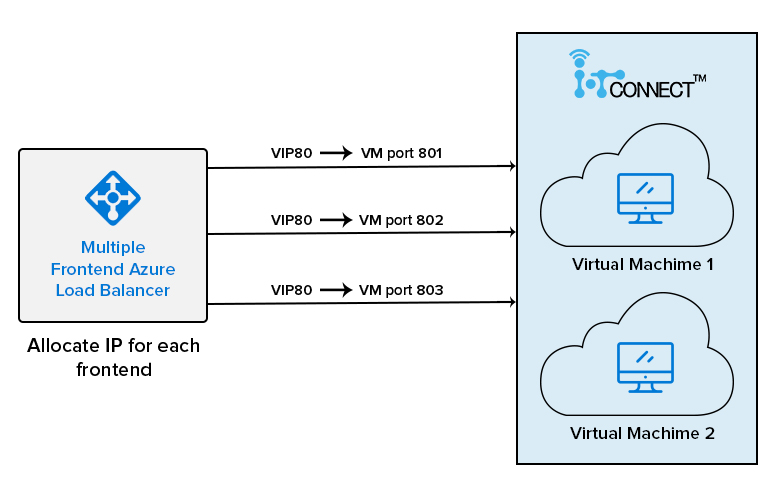Softweb Solutions introduces new load balancing capabilities to IoTConnect to capitalize on the rise of large volumes of data and traffic generated by IoT.
IoTConnect, Softweb’s AI-powered IoT platform, enables enterprises to connect heterogeneous devices through different network technologies and facilitates smart application development. This heterogeneity brings in many challenges in terms of managing network resources and incoming traffic from different applications/microservices. The diverse range of devices, a large variation in services, and an increasing amount of data call for greater load balancing capacity in an IoT platform so that the application traffic can be distributed equally.
Our team recently deployed Azure Load Balancer that enables users to not just scale their applications but also create high availability for the platform’s services. This provides high throughput and low latency, and supports inbound and outbound scenarios while making it easy to scale up to millions of flows for all TCP and UDP applications. This new capability facilitates a powerful and consistent front-end for a wide range of enterprise apps while empowering businesses to achieve greater security and high performance without being overloaded by traffic spikes.
So how is this achieved?
We have integrated Azure Load Balancer for incoming traffic to microservices that are running on VMs, which distributes new inbound flows that arrive at the Load Balancer’s frontend to backend pool instances, according to rules and health probes. We added multiple IPs and created custom rules for Azure LB that forward incoming traffic to the specific port on specific VMs when a health probe indicates a healthy backend endpoint. So this means that if an instance of any application goes offline, the traffic will be redirected to other healthy instances providing high availability and horizontal scaling without causing a costly timeout.

In IoTConnect, we have more than 18 microservices running in each VM. If any of these microservices go down, then Azure Load Balancer will tackle the situation and divert requests to a healthy instance. It also makes it easy to upgrade the app in the portal.
The result
Thanks to Azure Load Balancer, users can now enjoy a lot of benefits with IoTConnect as mentioned below:
- New scalable, fault-tolerant architecture
- Leverage custom routing policies
- Auto analysis of incoming traffic
- Seamless data transmission
- Better management of peak use intervals
- Auto traffic routing and load handling
- High-availability, reliability, and scalability
- No more costly timeout
Special thanks to Manishdan Langa and Dharak Choksi for providing valuable technical inputs.









